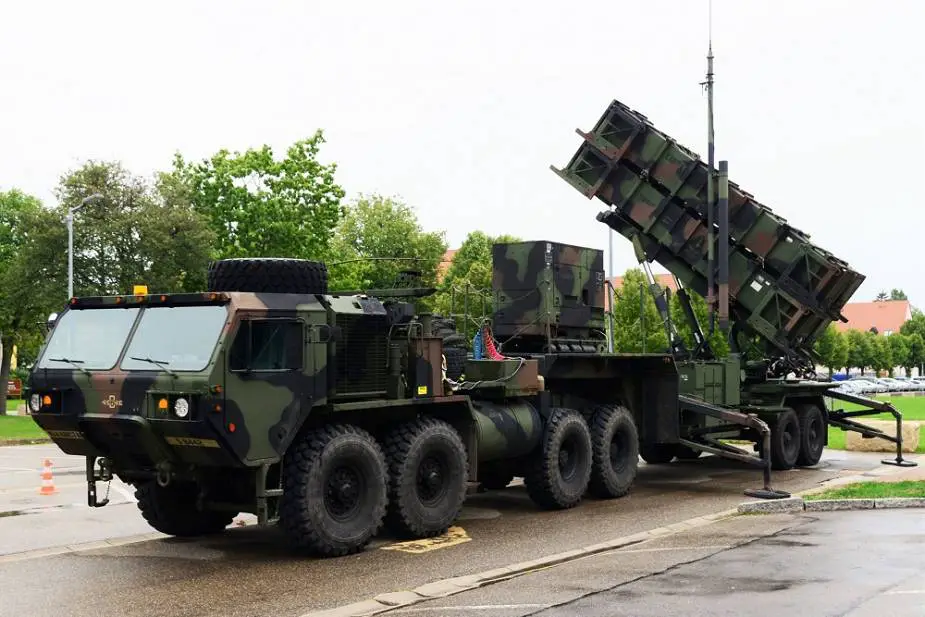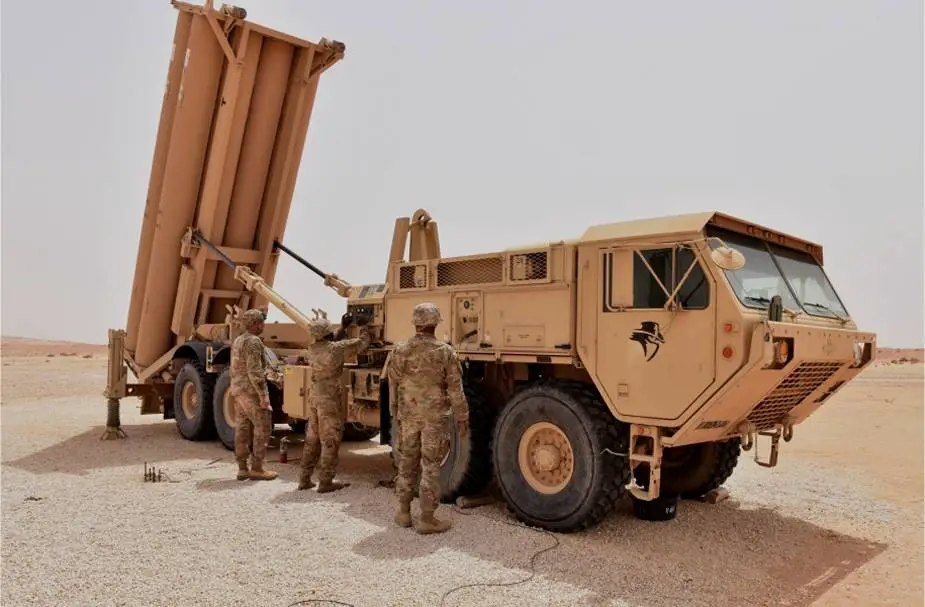According to information released by the United States Missile Defence Agency, on October 1, 2020, The Missile Defense Agency, U.S. Army Program Executive Office Missiles and Space, and U.S. Army Space and Missile Defense Command successfully conducted a test of the Patriot and Terminal High Altitude Area Defense (THAAD) air defense missile systems from White Sands Missile Range, New Mexico. The test, designated Flight Test Patriot Weapon System (FTP)-27, consisted of two events that took place today and earlier this year.
Follow Army Recognition on Google News at this link

MIM-104 Patriot surface-to-air missile (SAM) systems during a static-display demonstration Aug. 15, 2019, at Katterbach Army Airfield in Ansbach, Germany. (Picture source U.S. DoD)
Today, the THAAD (Terminal High Altitude Area Defense) Army-Navy/Transportable Radar Surveillance and Control Model 2 (AN/TPY-2) detected and tracked the Black Dagger target and successfully provided data to the Patriot weapon system to determine a launch solution. The Patriot weapon system successfully achieved an intercept of the target with a Patriot Advanced Capability-3 (PAC-3) Missile Segment Enhancement (MSE) interceptor using data provided by the THAAD AN/TPY-2 radar.
During the first event on February 20, 2020, the THAAD Army-Navy/Transportable Radar Surveillance and Control Model 2 (AN/TPY-2) also detected and tracked the Black Dagger target and successfully provided data to the Patriot weapon system to determine a launch solution. On that occasion, an intercept was not achieved due to an interceptor software upgrade error which has since been corrected, as demonstrated by today's successful intercept.
"The success of FTP-27 validates the interoperability of the Patriot and THAAD weapon systems," said MDA Director Vice Adm. Jon Hill. "This capability is vital to the Ballistic Missile Defense System to defend against rogue threats to our homeland, deployed forces and allies."
In addition, FTP-27 meets the requirements of the 2016 National Defense Authorization Act for the MDA and U.S. Army to annually test the interoperability and integration of the Patriot and THAAD weapon systems.
The Patriot MIM-104 is an air defense missile system produced by American companies Raytheon and Lockheed Martin Missiles and Fire Control. Patriot systems have been sold to the Netherlands, Poland, Germany, Egypt, Japan, Israel, Saudi Arabia, Kuwait, Republic of China (Taiwan), Greece, Spain, the United Arab Emirates, Qatar, and Romania. South Korea purchased several second-hand Patriot systems from Germany after North Korea test-launched ballistic missiles to the Sea of Japan and proceeded with underground nuclear testing in 2006.
The Patriot system has four major operational functions: communications, command and control, radar surveillance, and missile guidance. The four functions combine to provide a coordinated, secure, integrated, mobile air defense system. The first version of the Patriot was designed to destroy aerial threats as aircraft or combat helicopters and had very limited capability against ballistic missiles. The Patriot PAC-3 is an evolution of the standard Patriot able to destroy tactical ballistic missiles, advanced cruise missile and aircraft threats. The PAC-3 missile has a range of about 40 km and can reach targets at an altitude of up to 20 km.

U.S. Army Soldiers from Bravo Battery, 2nd Air Defense Artillery Regiment system checks a Terminal High Altitude Area Defense (THAAD) launcher during routine start up procedures in the U.S. Central Command’s area of responsibility, June 25, 2020. (Picture source U.S. DoD)
The Terminal High Altitude Area Defense (THAAD), formerly Theater High Altitude Area Defense, is an American anti-ballistic missile defense system designed to shoot down short-, medium-, and intermediate-range ballistic missiles. The THAAD system is being designed, built, and integrated by Lockheed Martin Missiles and Fire Control acting as prime contractor. Key subcontractors include Raytheon, Boeing, Aerojet Rocketdyne, Honeywell, BAE Systems, Oshkosh Defense, and MiltonCAT.
A THAAD battery consists of at least six launcher vehicles, each equipped with eight missiles, with two mobile tactical operations centers (TOCs) and the AN/TPY-2 ground-based radar (GBR). Although the actual figures are classified, THAAD missiles have an estimated range of 125 miles (200 km), and can reach an altitude of 93 miles (150 km).














